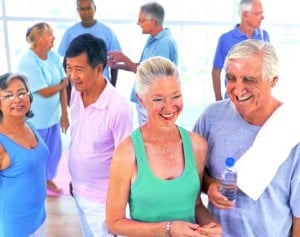
For 13 weeks, 217 graduate students participated in a randomized controlled trial in which they enrolled in free exercise classes at the University of Pennsylvania gym. The participants comprised three groups that each received different levels of motivational support. One group received promotional messages, like engaging videos or infographics, from the university to encourage them to exercise. Participants from another group were organized into small, anonymous peer groups. Members of the peer groups received updates on other members’ progress and achievements. They also received emails whenever a group member signed up for an exercise class. The third group served as the control group. They received neither promotional messages nor group updates.
The group that received promotional messages exhibited an initial increase in class attendance. However, the effectiveness of promotional messaging decreased rapidly and had no long-term effects on participation. The peer groups were the most successful study group. People in this group exercised more and the motivating effects of the peer group increased over the course of the study, producing substantial growth in enrollment.
The peer networks worked to motivate people by creating a positive feedback loop. In a typical social network, users see a hodge-podge of updates: some friends may say they went to the gym, while others might talk about eating pizza for dinner. By showing peer group members only the positive messages about gym attendance, the researchers were able to increase motivation in the groups.
“What our results show is that you don’t necessarily need to generate new media content in order to reach people. You just have to put people into the right kind of social environment where they can interact with each other, and even anonymous social interaction will create behavior change,” explained study leader Damon Centola.
This research is published in the journal Preventive Medicine Reports.
Previous news in exercise:



 © 2025 Unyte Health US Inc.
© 2025 Unyte Health US Inc.